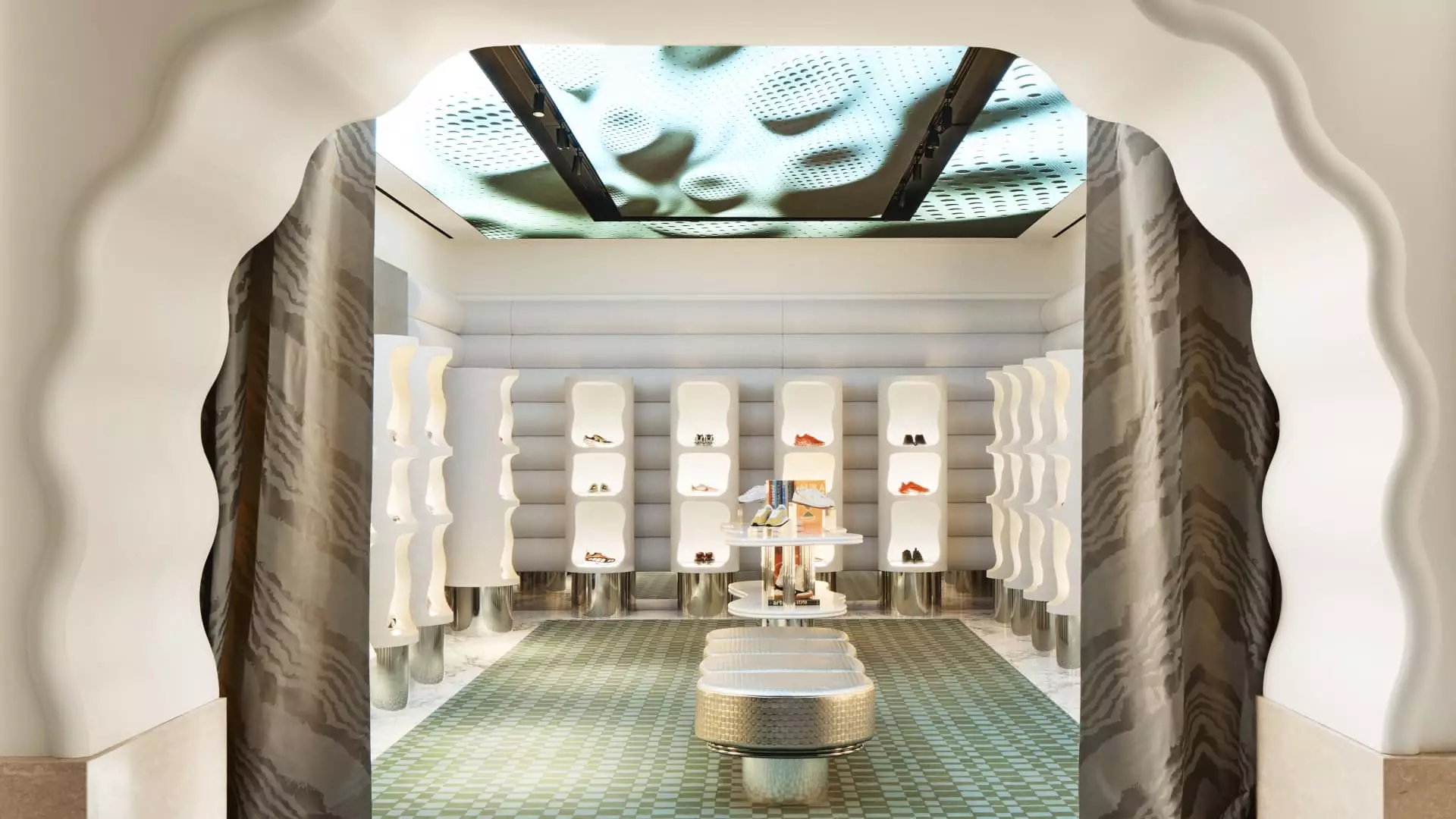The recent opening of the Printemps store in New York City’s Financial District marks a significant transition in how luxury is perceived and engaged within the American market. What was once an exclusive, almost pretentious tailgate of elegance is changing as Printemps redefines the luxury shopping experience. This monumental 55,000-square-foot establishment showcases not just high-end products but an almost carnival-like atmosphere with its playful design, echoing the decadence of a Parisian apartment. However, beneath this shiny surface lies the troubling reality that the concept of luxury itself may be losing its luster in the U.S.
With about 25% of its offerings already rare within American borders, Printemps’ strategy hinges heavily on its curated mix of hard-to-find French labels and popular luxury brands. By emphasizing experiential shopping—such as spa services and chic dining options—the retailer aims to stand out amidst the growing competition. However, one must question whether this approach can sustain itself in a market increasingly dictated by shifting economic circumstances and consumer sensibilities.
The Luxury Spending Slowdown: A Grim Underbelly
Luxury spending has undeniably slowed globally, and Printemps, although ambitious, is betting on an uncertain economic climate. The brand’s arrival coincides with broader struggles within the luxury sector, particularly as inflation puts pressure on consumers, even those traditionally wealthy. The notion that the U.S. is a resilient market for luxury brands is a double-edged sword; while it may hold true on a superficial level, these brands must grapple with changing consumer behaviors and a reluctance among buyers to indulge in ostentation during tough financial times.
A report from Kearney paints a stark picture, projecting mere 1% to 3% annual growth in global luxury spending until 2027, a massive reduction from the explosive 27% growth witnessed in the wake of the pandemic. The U.S. market may seem relatively insatiable, but behind closed doors, the momentum may very well indicate a preference for more practical expenditures rather than luxury indulgences. The shift away from conspicuous consumption will, in my opinion, complicate Printemps’ future—and significantly jeopardize the longevity of their American venture.
New York as the Stage: A Different Kind of Experience
Printemps arrived with a flurry of innovative concepts—like its “shoe forest” and a state-of-the-art restaurant—but what it is essentially capitalizing on is location, location, location. New York has always served as the epicenter of aspirational shopping, and the arrival of such a grand retail concept fills a certain void felt by both consumers and brands alike. However, will this be enough? Americans are notoriously fickle in their shopping habits, with a distinct gravitation toward the next big thing rather than loyalty to a singular brand.
Entrusting their strategy to a blend of fine dining and high-end commercialism, the brand is making the gamble that shoppers will want to immerse themselves in this heterogeneous experience. Yet, there’s a lurking possibility that this model may more closely resemble a passing trend than a permanent integration into the American luxury landscape. The balance of affordability and exclusivity remains precarious, and Printemps may find itself walking a tightrope.
Printemps: Cultural Symbolism Meets Economic Reality
Luxury retail is not merely about products; it embodies cultural symbolism, often rooted in exclusivity and heritage. Printemps represents a rich historical tapestry, having cultivated its reputation since 1865. This heritage, however, competes against the simultaneous appeal of fast fashion and accessible alternatives. The cultural allure is dwindling, and the resonance of brands steeped in tradition is increasingly met with skepticism as consumers become more socially conscious.
Moreover, as brands like Tiffany & Co. and Louis Vuitton invest heavily in their own real estate, one must question whether the overhead involved can always be justified by profit margins. Printemps may represent an aspiration, but under the relentless march of changing consumer preferences, can it sustain its relevance amid a burgeoning preference for conscious consumption?
The Paradox of Luxury in a Changing World
Highlighting exclusivity yet simultaneously opening accessibility poses an almost contradictory challenge for Printemps. The allure lies in desirability, not ubiquity, propelling the question: can a traditional luxury retailer still embody its essence while attempting to appeal to the masses? As Printemps attempts to cater to both high-end consumers and casual browsers with “approachable items,” they may dilute their brand’s prestige.
While the intention to create a welcoming atmosphere for tourists and casual shoppers is commendable, it could inadvertently alienate loyal customers who thrive on that sense of exclusivity. This paradox may haunt Printemps in a marketplace increasingly influenced by a broader sensibility focused on sustainability, inclusivity, and a reevaluation of what it means to truly engage with luxury.
While Printemps heralds a bold entry into the American retail landscape, the underlying challenges of consumer behavior, economic uncertainty, and shifting values around luxury may hinder its ultimate success. The glitzy facade may convince some that the golden era of luxury is far from over, but for those who look closer, it reveals an intriguing paradox where the allure of the past clashes with the realities of an evolving marketplace.


Leave a Reply